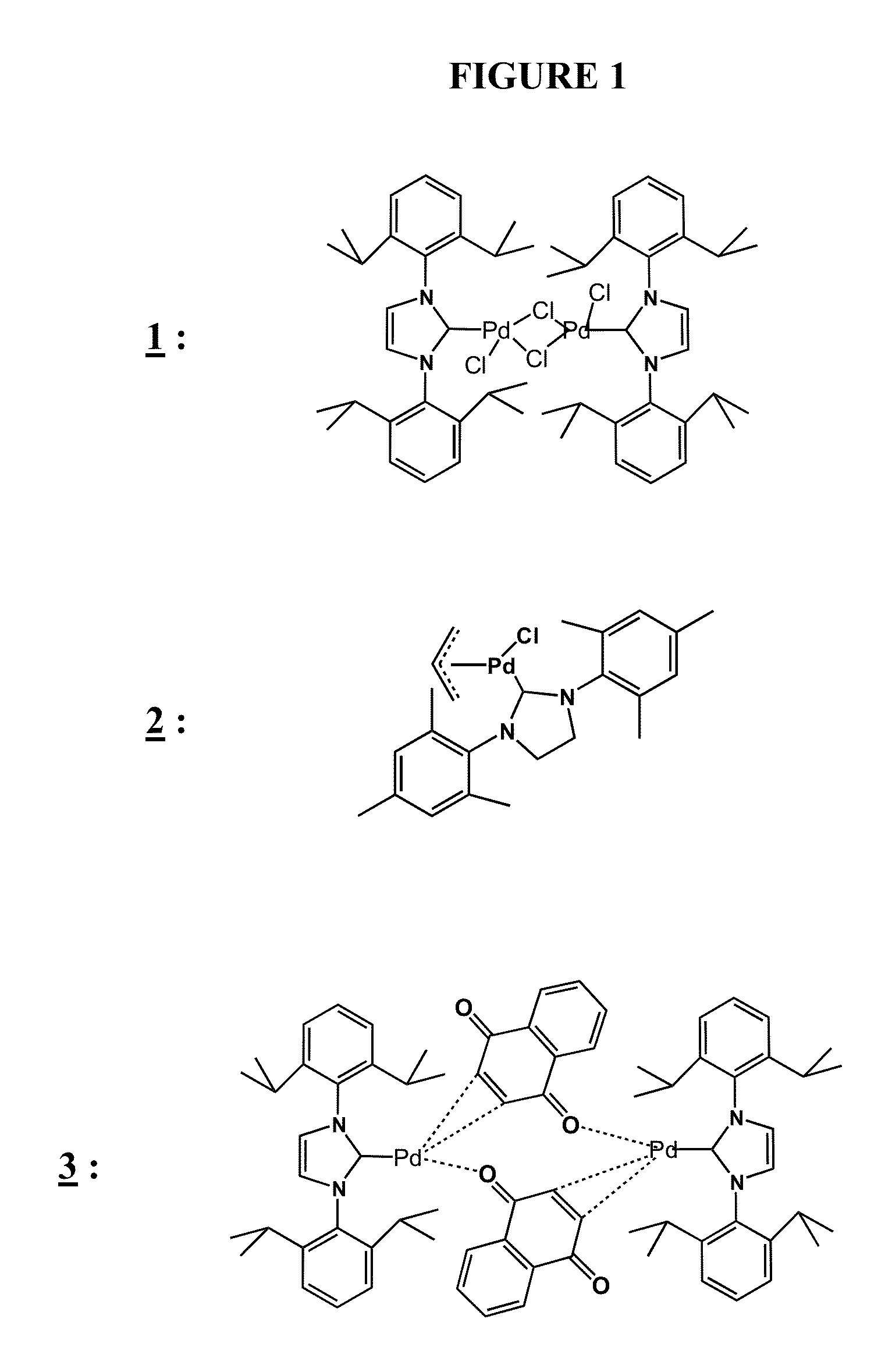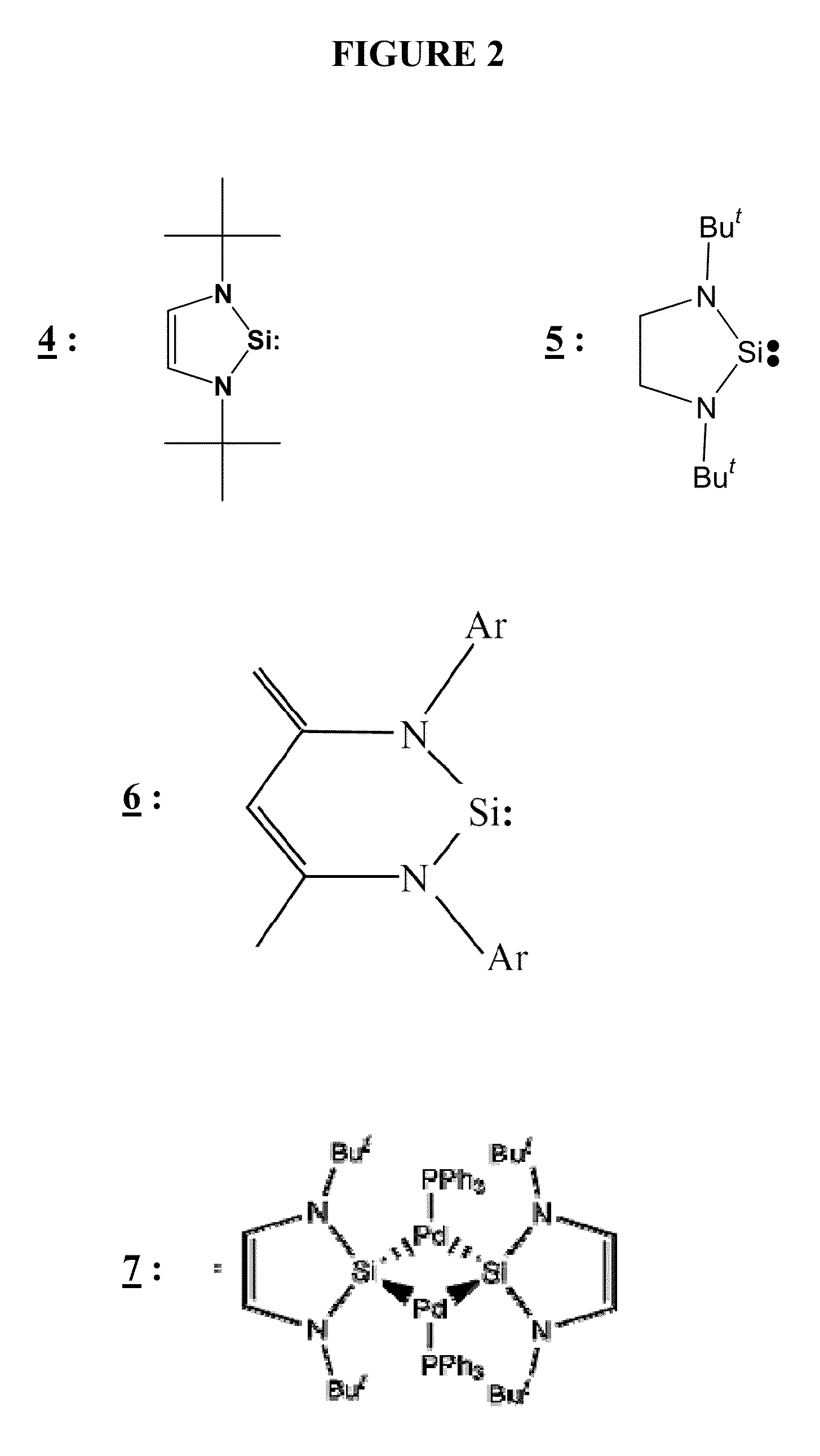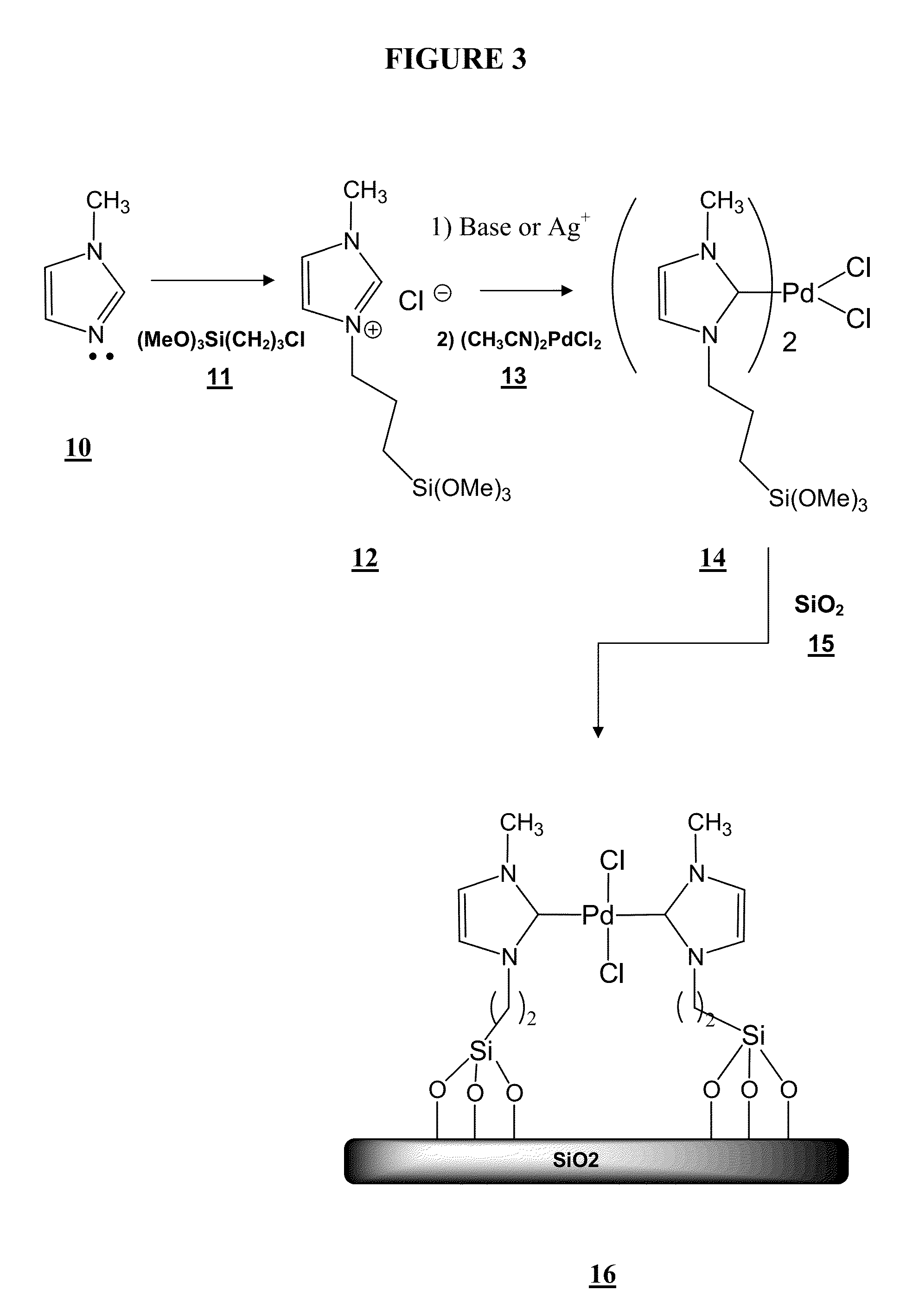Methods of Polymerizing Silanes and Cyclosilanes Using N-Heterocyclic Carbenes, Metal Complexes Having N-Heterocyclic Carbene Ligands, and Lanthanide Compounds
- Summary
- Abstract
- Description
- Claims
- Application Information
AI Technical Summary
Benefits of technology
Problems solved by technology
Method used
Image
Examples
example 1
Synthesis of an NHC—Pd Metal Complex and Bonding of the NHC—Pd Complex to Silica Gel as a Support
[0084]Synthesis of bis [N-3-(3-trimethoxysilylpropyl)-3-methylimidazol-2-ylidene]-dichloropalladium (II): (3-chloropropyl)trimethoxysilane (24.23 g) is added to a solution of 1-methylimidazole (10.12 g) in absolute toluene (120 mL), in a two necked 250 mL Schlenk flask. The system was evacuated and refilled with argon three times, and refluxed for 24 hours under an argon atmosphere. The resulting two phase reaction mixture was then allowed to cool to room temperature, and the organic layer was separated from the ionic liquid (IL) layer. The resulting pale yellow IL layer was then thoroughly washed with dry Et2O (5×20 mL) and dried under vacuum for 12 hours at room temperature. The resulting ionic liquid contained 30% N-3-(3-trimethoxysilylpropyl)-3-methylimidazolium chloride and weighed 10.3 g.
[0085]The N-3-(3-trimethoxysilylpropyl)-3-methylimidazolium chloride was extracted and 150 mg o...
example 2
Synthesis of Polysilane by Catalysis using NHC—Pd Complexes
[0088]Tetrasilane in cyclohexane with a mass-loading of 20% (300 mg) was added to a 4 mL amber vial along with 100 ppm of the NHC—Pd complex [N-3-(3-trimethoxysilylpropyl)-3-methylimidazol-2-ylidene]dichloropalladium (II) under an inert atmosphere, and this reaction mixture was allowed to stir for 12 hours in the loosely capped vial. Then, the reaction was quenched with 2 g of distilled cyclohexane, and the resulting mixture transferred to a 40 mL amber vial (equipped with a stir bar) and further diluted with 5 g of cyclohexane. After 30 min of stirring, insoluble materials were allowed to settle for about 15 min, and the mixture then filtered through a short plug of Celite (primed with distilled cyclohexane), ensuring that the NHC—Pd catalyst stayed on top of the filter bed. The solution was then transferred to a Schlenk tube and the volatile materials removed by applying high vacuum (<˜300 mTorr) for about 2 hours. This dr...
example 3
Synthesis of Polysilanes by Heterogeneous Catalysis using Silica Gel NHC—Pd Complexes
[0089]Tetrasilane (300 mg) was added to a 4 mL amber vial containing 50 mg of silica gel NHC—Pd complexes (0.066 mol of NHC—Pd complex per mg of silica) under an inert atmosphere, and this reaction mixture was allowed to stir for 12 hours in the loosely capped vial. Then, the reaction was quenched with 2 g of distilled cyclohexane, and the resulting mixture transferred to a 40 mL amber vial (equipped with a stir bar) and further diluted with 5 g of cyclohexane. After 30 min of stirring, insoluble materials were allowed to settle for about 15 min, and the mixture then filtered through a short plug of Celite (primed with distilled cyclohexane), ensuring that the silica gel NHC—Pd complexes stayed on top of the filter bed. The solution was then transferred to a Schlenk tube and the volatile materials removed by applying high vacuum (<˜300 mTorr) for about 2 hours. This drying step should reduce the tet...
PUM
 Login to View More
Login to View More Abstract
Description
Claims
Application Information
 Login to View More
Login to View More - R&D
- Intellectual Property
- Life Sciences
- Materials
- Tech Scout
- Unparalleled Data Quality
- Higher Quality Content
- 60% Fewer Hallucinations
Browse by: Latest US Patents, China's latest patents, Technical Efficacy Thesaurus, Application Domain, Technology Topic, Popular Technical Reports.
© 2025 PatSnap. All rights reserved.Legal|Privacy policy|Modern Slavery Act Transparency Statement|Sitemap|About US| Contact US: help@patsnap.com



